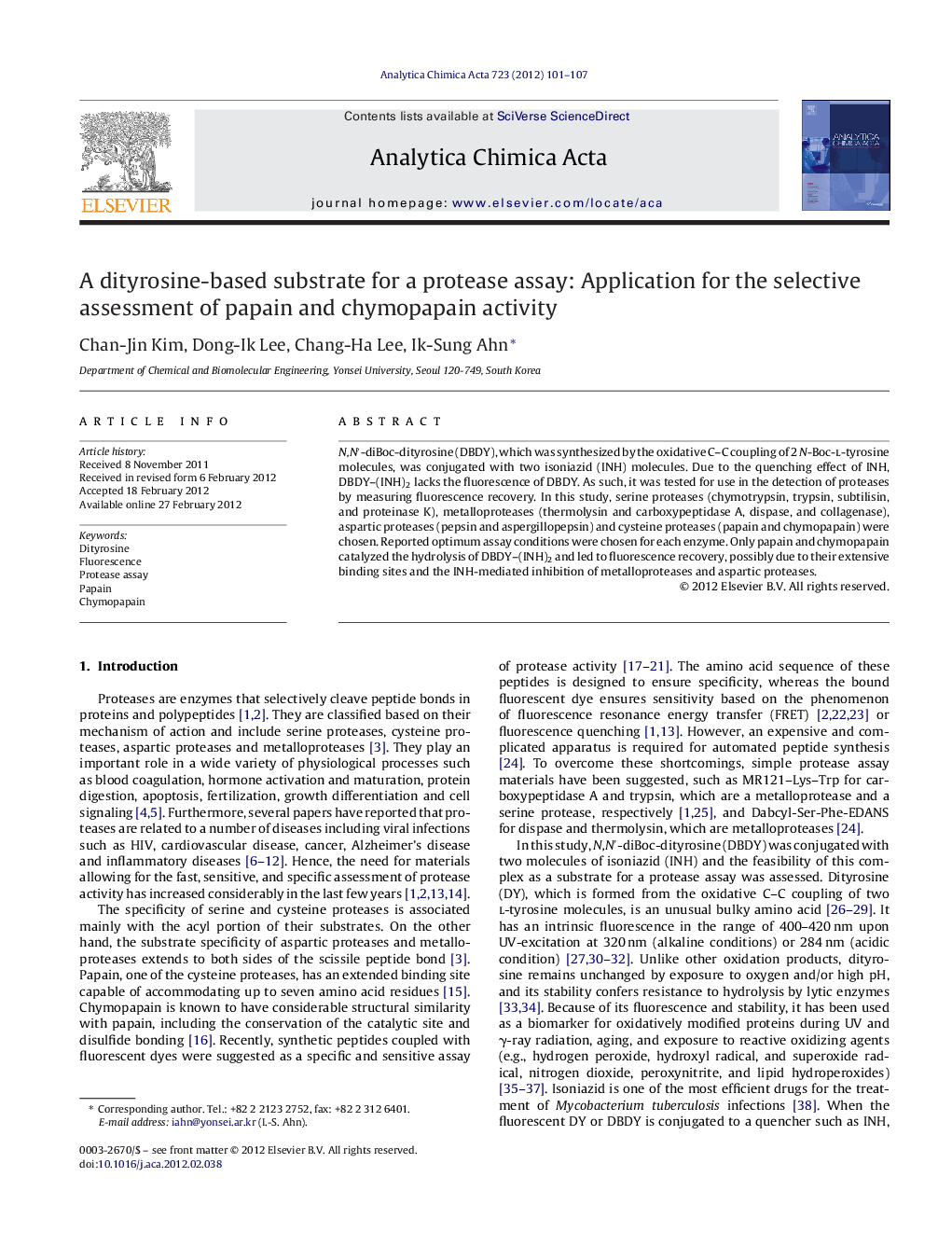| کد مقاله | کد نشریه | سال انتشار | مقاله انگلیسی | نسخه تمام متن |
|---|---|---|---|---|
| 1166779 | 1491109 | 2012 | 7 صفحه PDF | دانلود رایگان |

N,N′-diBoc-dityrosine (DBDY), which was synthesized by the oxidative C–C coupling of 2 N-Boc-l-tyrosine molecules, was conjugated with two isoniazid (INH) molecules. Due to the quenching effect of INH, DBDY–(INH)2 lacks the fluorescence of DBDY. As such, it was tested for use in the detection of proteases by measuring fluorescence recovery. In this study, serine proteases (chymotrypsin, trypsin, subtilisin, and proteinase K), metalloproteases (thermolysin and carboxypeptidase A, dispase, and collagenase), aspartic proteases (pepsin and aspergillopepsin) and cysteine proteases (papain and chymopapain) were chosen. Reported optimum assay conditions were chosen for each enzyme. Only papain and chymopapain catalyzed the hydrolysis of DBDY–(INH)2 and led to fluorescence recovery, possibly due to their extensive binding sites and the INH-mediated inhibition of metalloproteases and aspartic proteases.
Figure optionsDownload as PowerPoint slideHighlights
► N,N′-diBoc-dityrosine (DBDY) was conjugated with two isoniazid (INH) molecules.
► Due to the quenching effect of INH, DBDY–(INH)2 lost the fluorescence of DBDY.
► Only papain and chymopapain catalyzed the hydrolysis of DBDY–(INH)2.
► DBDY–(INH)2 can be used as a selective and sensitive assay of papain and chymopapain.
Journal: Analytica Chimica Acta - Volume 723, 20 April 2012, Pages 101–107